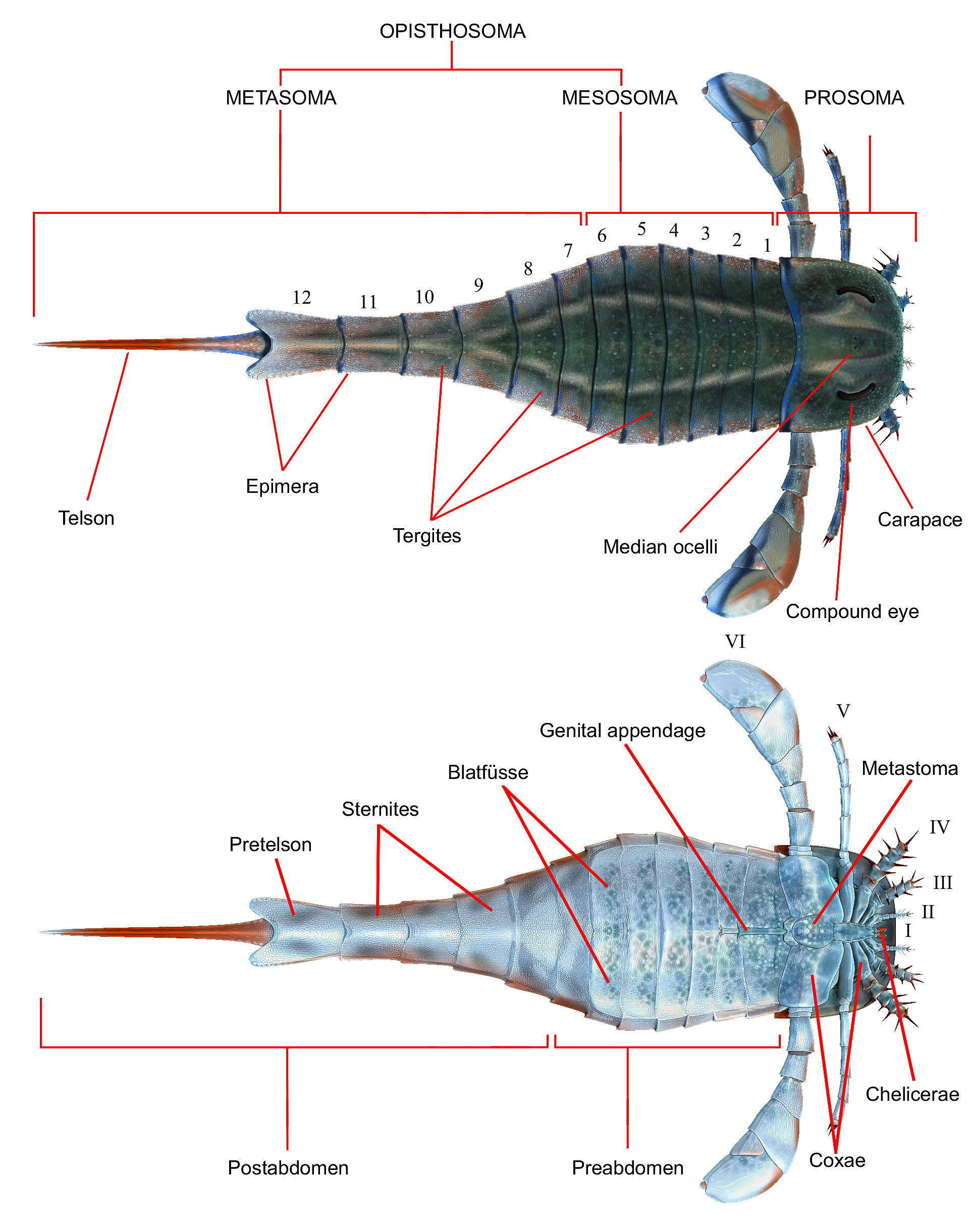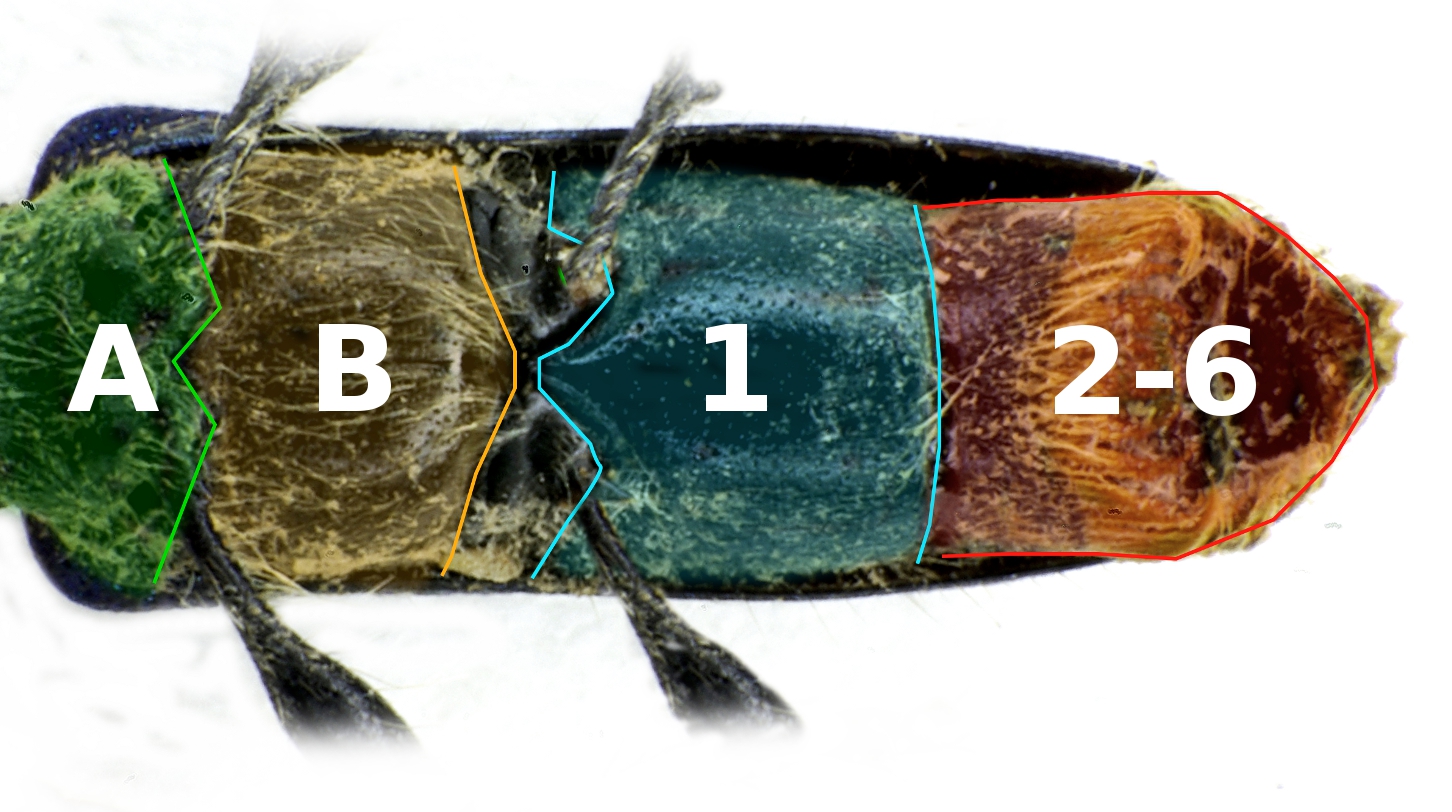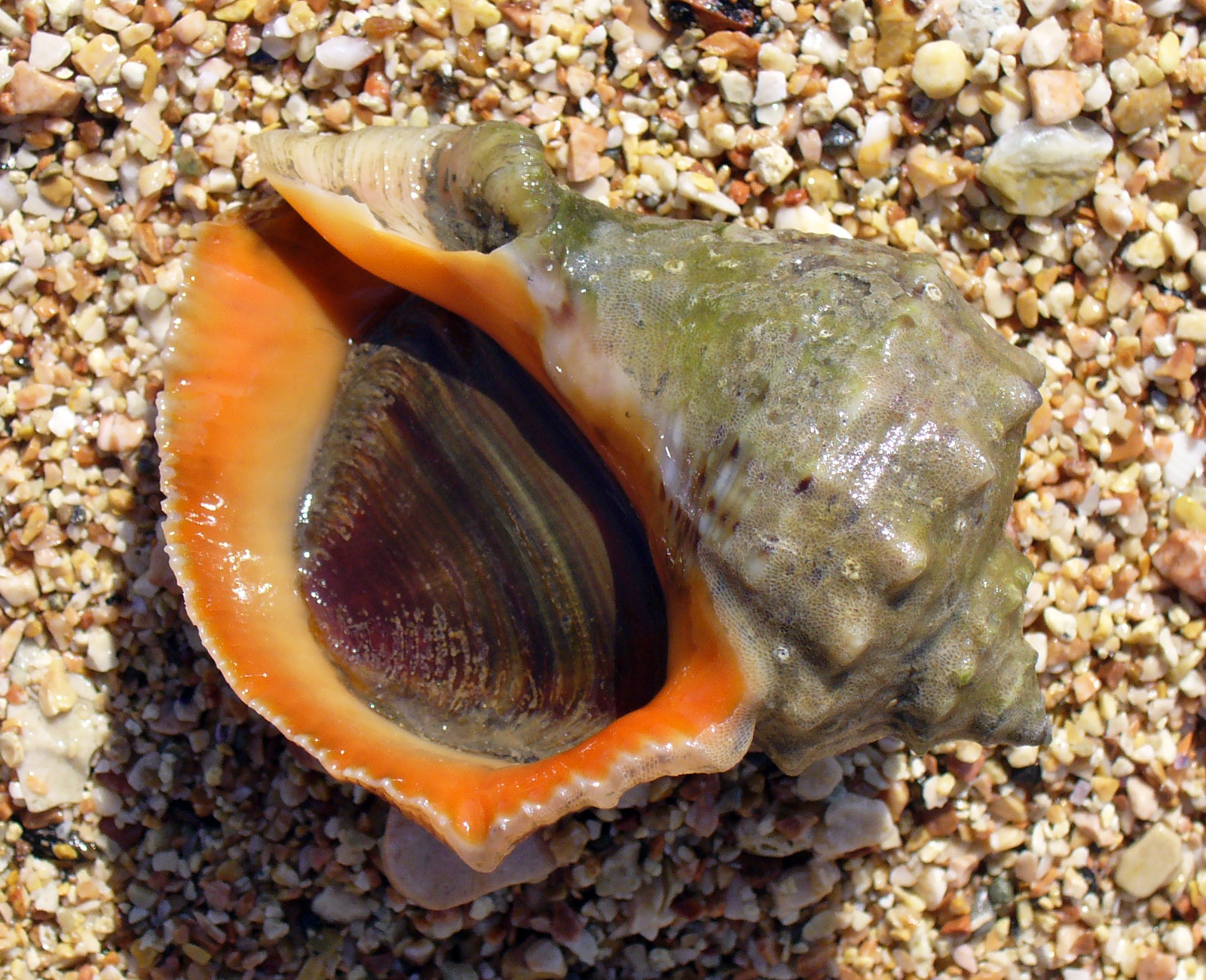|
Orcanopterus
''Orcanopterus'' is a genus of a eurypterid classified as part of the family Waeringopteridae. The genus contains one species, ''O. manitoulinensis'', from the Ordovician of Manitoulin, Canada. Morphology Limbs ''Orcanopterus'' is estimated to be up to long. Like all eurypterids, it had six pairs of limbs, the hindmost of which were broad flat paddles. The first pair of limbs in ''Orcanopterus'' are unknown, but were presumably small chelicerae for eating with. The second to fourth pairs of limbs were heavily spined and around 7–8 cm long. The second pair of limbs had four podomeres but is poorly preserved and no spines can be made out. The third pair had four podomeres and three forward-facing spines. The fourth had three podomeres with forward-pointing spines and the fifth pair of limbs had four podomeres, all with spines and with the final podomere a long spine. Its sixth pair of limbs were flat paddles with nine podomeres - the ninth one is unusually large. Thre ... [...More Info...] [...Related Items...] OR: [Wikipedia] [Google] [Baidu] |
Waeringopteridae
Waeringopteridae is a family of eurypterids, an extinct group of aquatic arthropods. The Waeringopteridae is the only family classified as part of the superfamily Waeringopteroidea, which in turn is classified within the infraorder Diploperculata in the suborder Eurypterina. The earliest known member of the group, '' Orcanopterus'', has been recovered from deposits of Katian (Late Ordovician) age and the latest known surviving member, ''Grossopterus'', has been recovered from deposits of Siegenian (Early Devonian) age. The name Waeringopteridae is derived from the type genus '' Waeringopterus'', which is named in honor of eurypterid researcher Erik N. Kjellesvig-Waering. Waeringopterid fossils are very rare and the family only contains five known species classified in three different genera (''Waeringopterus'', ''Orcanopterus'' and ''Grossopterus''). Four of these species are from the ancient continent of Laurentia, with the only species known from outside of it being a Devonian ... [...More Info...] [...Related Items...] OR: [Wikipedia] [Google] [Baidu] |
Eurypterid
Eurypterids, often informally called sea scorpions, are a group of extinct arthropods that form the order Eurypterida. The earliest known eurypterids date to the Darriwilian stage of the Ordovician period 467.3 million years ago. The group is likely to have appeared first either during the Early Ordovician or Late Cambrian period. With approximately 250 species, the Eurypterida is the most diverse Paleozoic chelicerate order. Following their appearance during the Ordovician, eurypterids became major components of marine faunas during the Silurian, from which the majority of eurypterid species have been described. The Silurian genus ''Eurypterus'' accounts for more than 90% of all known eurypterid specimens. Though the group continued to diversify during the subsequent Devonian period, the eurypterids were heavily affected by the Late Devonian extinction event. They declined in numbers and diversity until becoming extinct during the Permian–Triassic extinction event (or sometim ... [...More Info...] [...Related Items...] OR: [Wikipedia] [Google] [Baidu] |
Late Ordovician
The Ordovician ( ) is a geologic period and system, the second of six periods of the Paleozoic Era. The Ordovician spans 41.6 million years from the end of the Cambrian Period million years ago (Mya) to the start of the Silurian Period Mya. The Ordovician, named after the Welsh tribe of the Ordovices, was defined by Charles Lapworth in 1879 to resolve a dispute between followers of Adam Sedgwick and Roderick Murchison, who were placing the same rock beds in North Wales in the Cambrian and Silurian systems, respectively. Lapworth recognized that the fossil fauna in the disputed strata were different from those of either the Cambrian or the Silurian systems, and placed them in a system of their own. The Ordovician received international approval in 1960 (forty years after Lapworth's death), when it was adopted as an official period of the Paleozoic Era by the International Geological Congress. Life continued to flourish during the Ordovician as it did in the earlier Cambrian ... [...More Info...] [...Related Items...] OR: [Wikipedia] [Google] [Baidu] |
Simple Eye In Invertebrates
A simple eye (sometimes called a pigment pit) refers to a form of eye or an optical arrangement composed of a single lens and without an elaborate retina such as occurs in most vertebrates. In this sense "simple eye" is distinct from a multi-lensed "compound eye", and is not necessarily at all simple in the usual sense of the word. The structure of an animal's eye is determined by the environment in which it lives, and the behavioural tasks it must fulfill to survive. Arthropods differ widely in the habitats in which they live, as well as their visual requirements for finding food or conspecifics, and avoiding predators. Consequently, an enormous variety of eye types are found in arthropods. They possess a wide variety of novel solutions to overcome visual problems or limitations. Use of the term ''simple eye'' is flexible, and must be interpreted in proper context; for example, the eyes of humans and of other large animals such as most cephalopods, are '' camera eyes'' and ... [...More Info...] [...Related Items...] OR: [Wikipedia] [Google] [Baidu] |
Diploperculata
Diploperculata is an infraorder of eurypterids, an extinct group of aquatic arthropods commonly known as "sea scorpions". The name, derived from Greek διπλόω ("double") and ''operculum'', refers to the distinguishing feature that unites the superfamilies included in the group, that the genital operculum is made up of two fused segments. The group contains the three eurypterine superfamilies Carcinosomatoidea, Adelophthalmoidea and Pterygotioidea alongside the as of yet undescribed "waeringopteroid" clade. The diploperculate eurypterine clade had prior to its description been noted as a monophyletic group of derived eurypterines that form a sister-taxon to the superfamily Eurypteroidea. See also * List of eurypterid genera This list of eurypterid genera is a comprehensive listing of all genera that have ever been included in the order Eurypterida, excluding purely vernacular terms. The list includes all commonly accepted genera, but also genera that are now consider . ... [...More Info...] [...Related Items...] OR: [Wikipedia] [Google] [Baidu] |
Sternum (arthropod Anatomy)
The sternum (pl. "sterna") is the ventral portion of a segment of an arthropod thorax or abdomen. In insects, the sterna are usually single, large sclerites, and external. However, they can sometimes be divided in two or more, in which case the subunits are called sternites, and may also be modified on the terminal abdominal segments so as to form part of the functional genitalia, in which case they are frequently reduced in size and development, and may become internalized and/or membranous. For a detailed explanation of the terminology, see Kinorhynchs have tergal and sternal plates too, though seemingly not homologous with those of arthropods.Sørensen, M. V. et al. Phylogeny of Kinorhyncha based on morphology and two molecular loci. PLoS One 10, 1–33 (2015). Ventrites are externally visible sternites. Usually the first sternite is covered up, so that vertrite numbers do not correspond to sternid numbers. The term is also used in other arthropod groups such as crustacea ... [...More Info...] [...Related Items...] OR: [Wikipedia] [Google] [Baidu] |
Furcula (springtail)
The furcula, or furca It is a forked, tail-like appendage. It is present in most species of springtails, and in them it is attached ventrally to the fourth abdominal segment. The organ most often is present in species of ''Collembola'' that lives in the upper soil layers where it is used for jumping to avoid predators. While at rest, it is retracted under the abdomen and held there by a structure variously called the retinaculum or hamula, which in turn is located beneath the third abdominal segment. When the furcula escapes from retinaculum, it swings downwards and hits the substrate, propelling the springtail into the air. The animal does not use this mechanism for ordinary locomotion, but only for escaping from predators or severe stress. One reason not to use the furcula for general locomotion other than to escape threats, is that its action is very unpredictable; when the furcula is released, the springtail is sent tumbling through the air on a practically arbitrary traject ... [...More Info...] [...Related Items...] OR: [Wikipedia] [Google] [Baidu] |
Operculum (animal)
An operculum is an anatomical feature, a stiff structure resembling a lid or a small door that opens and closes, and thus controls contact between the outside world and an internal part of an animal. Examples include: * An operculum (gastropod), a single lid that (in its most complete form) closes the aperture of the shell when the animal is retracted, and thus protects the internal soft parts of the animal that are not completely covered by the shell. The operculum lies on the top rear part of the foot. When the foot is retracted, the operculum is rotated 180° and closes the shell. * An operculum (fish), a flap that covers the gills in bony fishes and chimaeras. * The cover that rapidly opens a cnida of a cnidarian such as a jellyfish or a sea anemone. The lid may be a single hinged flap or three hinged flaps arranged like slices of pie. * In insects, the operculum is the name for one or more lids covering the tympanal cavity. A subgenital operculum is exhibited in phasmoidea ... [...More Info...] [...Related Items...] OR: [Wikipedia] [Google] [Baidu] |
Trilobite
Trilobites (; meaning "three lobes") are extinct marine arthropods that form the class Trilobita. Trilobites form one of the earliest-known groups of arthropods. The first appearance of trilobites in the fossil record defines the base of the Atdabanian stage of the Early Cambrian period () and they flourished throughout the lower Paleozoic before slipping into a long decline, when, during the Devonian, all trilobite orders except the Proetida died out. The last extant trilobites finally disappeared in the mass extinction at the end of the Permian about 252 million years ago. Trilobites were among the most successful of all early animals, existing in oceans for almost 270 million years, with over 22,000 species having been described. By the time trilobites first appeared in the fossil record, they were already highly diversified and geographically dispersed. Because trilobites had wide diversity and an easily fossilized exoskeleton, they left an extensive fossil record. Th ... [...More Info...] [...Related Items...] OR: [Wikipedia] [Google] [Baidu] |
Telson
The telson () is the posterior-most division of the body of an arthropod. Depending on the definition, the telson is either considered to be the final segment of the arthropod body, or an additional division that is not a true segment on account of not arising in the embryo from teloblast areas as other segments. It never carries any appendages, but a forked "tail" called the caudal furca may be present. The shape and composition of the telson differs between arthropod groups. Crustaceans In lobsters, shrimp and other decapods, the telson, along with the uropods, forms the tail fan. This is used as a paddle in the caridoid escape reaction ("lobstering"), whereby an alarmed animal rapidly flexes its tail, causing it to dart backwards. Krill can reach speeds of over 60 cm per second by this means. The trigger time to optical stimulus is, in spite of the low temperatures, only 55 milliseconds. In the Isopoda and Tanaidacea (superorder Peracarida), the last abdomin ... [...More Info...] [...Related Items...] OR: [Wikipedia] [Google] [Baidu] |




.jpg)

.jpg)
